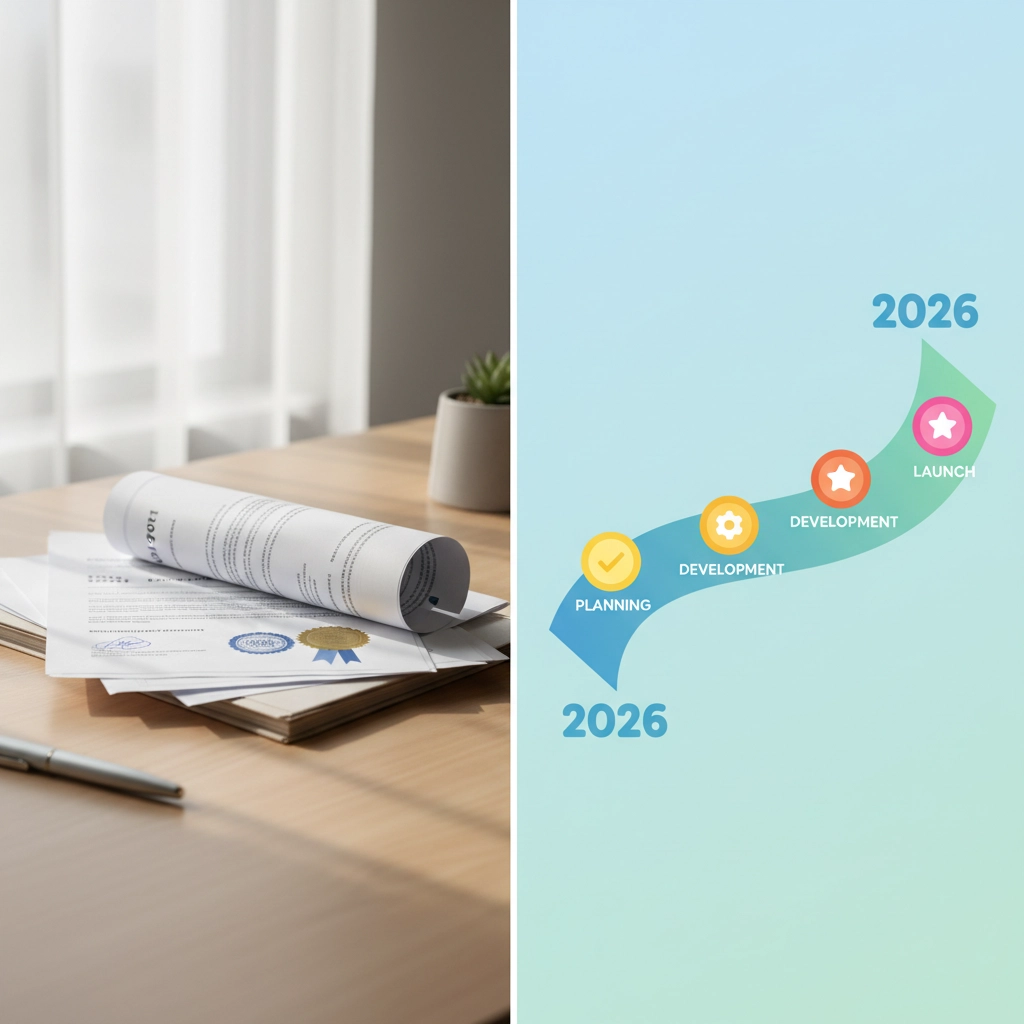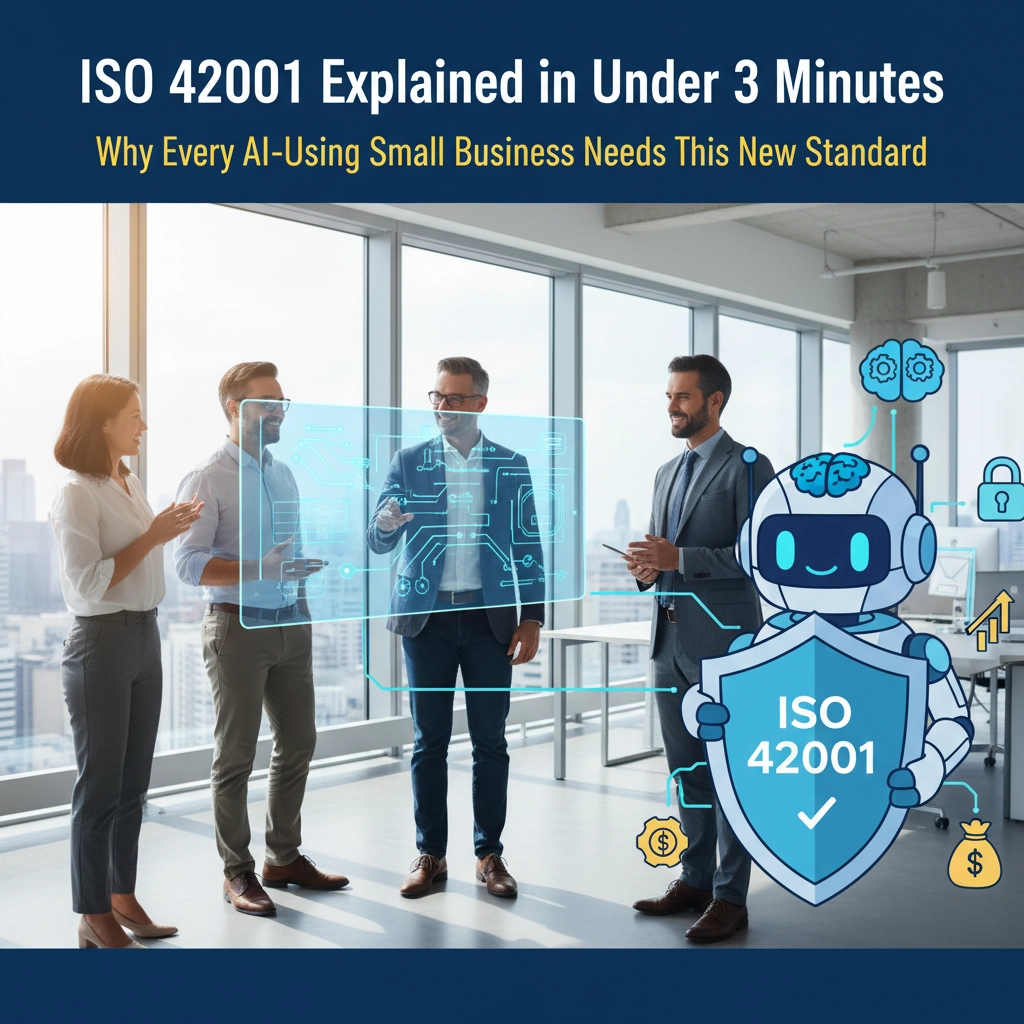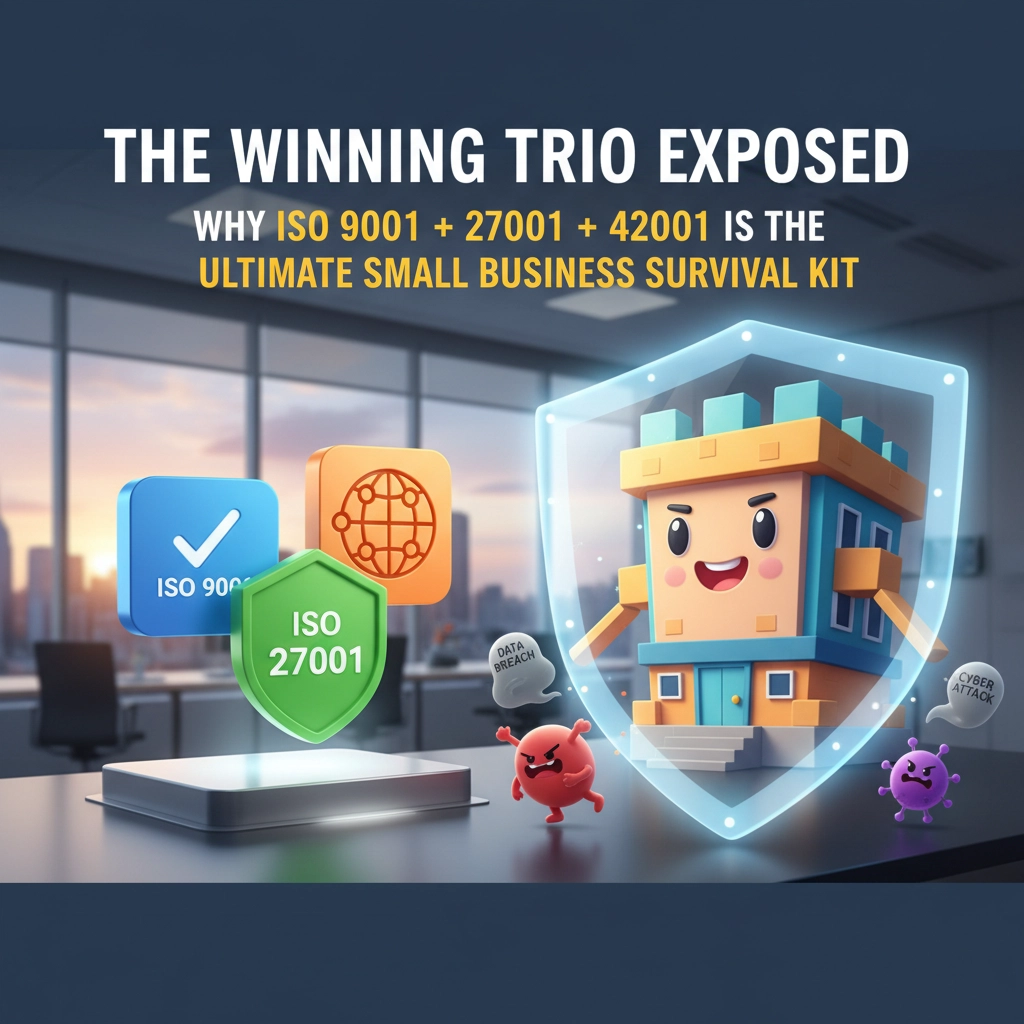
The Ultimate Guide to ISO 9001's 2025 Update: Everything Small Businesses Need to Know
0
0
0
Are you feeling overwhelmed by whispers of ISO 9001 changes coming your way? Wondering if your small business can handle another set of compliance updates without breaking the bank or your sanity? Take a deep breath – you're in exactly the right place to get clarity on what's actually happening with ISO 9001.
Let's clear up some confusion right away: while discussions about ISO 9001 modernization have been ongoing throughout 2025, the concrete changes are actually coming in ISO 9001:2026. The Draft International Standard (DIS) has already been released, giving us our first real look at what's changing. And here's the best news for small business owners like you: these changes are far more manageable than you might expect.
Setting the Record Straight: It's ISO 9001:2026, Not 2025
First things first – let's address the elephant in the room. Despite various discussions and speculation about updates throughout 2025, the official revision is ISO 9001:2026. This isn't just a minor timing detail; it means you have more time to prepare than you might have thought, and the changes are now concrete rather than speculative.
The revision represents an evolution, not a revolution. If you're already compliant with ISO 9001:2015, you'll face a minimal transition burden. This is fantastic news for small businesses that can't afford major overhauls or lengthy implementation periods.

The Real Changes: What's Actually Different in 2026
Climate Change Integration – It's Now Official
Remember that climate change amendment from 2024? It's now fully integrated into Clause 4.1. This means your organization needs to consider climate change as part of your organizational context. For most small businesses, this won't mean massive changes – it's about acknowledging how environmental factors might affect your operations and planning accordingly.
Think of it this way: if you run a local bakery, you might consider how extreme weather could affect supply chains or energy costs. It's practical thinking, not environmental activism.
Leadership Gets More Specific – And That's Good News
Top management must now explicitly promote and demonstrate both quality culture and ethical behavior. As a small business owner, this actually plays to your strengths. You already set the tone for your organization – now you just need to make it more intentional.
This change recognizes what successful small businesses already know: culture starts at the top. Your daily actions, decisions, and communication style shape your team's approach to quality. The new requirement simply asks you to be more deliberate about it.
Your Quality Policy Needs Better Alignment
Your quality policy must now explicitly "take into account the context of the organization and support its strategic direction." This isn't about writing more documentation – it's about ensuring your quality policy actually connects to your business strategy rather than sitting in a filing cabinet gathering dust.
For small businesses, this is actually liberating. Your quality policy can now be a living document that truly reflects how you operate, not a generic template you downloaded online.

Risk and Opportunities Get Clearer Structure
The revision reorganizes risk management into clearer sub-sections, separating risk mitigation from opportunity pursuit. This structured approach will help you organize your thinking around both protecting your business and growing it strategically.
Small businesses often excel at identifying opportunities but sometimes struggle with systematic risk management. This new structure gives you a framework to balance both effectively.
Enhanced Awareness Training – Building Your Quality Culture
Employees must now understand "quality culture and ethical behavior" as part of their awareness training. This means going beyond job-specific training to help your team understand the broader quality culture you're building.
For small businesses, this is often easier than for large corporations. Your team likely already knows the company values through daily interaction – now you just need to formalize that understanding.
What This Means for Your Small Business
You're Not Starting Over
The most important thing to understand is that if you're already ISO 9001:2015 compliant, you're not starting from scratch. The core requirements in Clauses 4-10 feature only minor changes. This means your existing processes, documentation, and training largely remain valid.
Accessibility Remains Key
ISO 9001 continues to be designed for organizations of all sizes, including those with tight budgets and limited personnel. Whether you're running a creative agency, a tech startup, or a local service business, the standard remains accessible and relevant.

The Changes Actually Help You
Many of these updates address real-world challenges small businesses face:
Clearer risk structure helps you balance protection and growth
Leadership requirements formalize the culture-setting you already do
Quality policy alignment makes your documentation more practical and relevant
Climate considerations prepare you for increasingly important environmental factors
How to Prepare Without Panic
Start with Leadership Assessment
Evaluate how you currently demonstrate quality culture and ethical behavior. Are these values visible in your daily operations, or do they exist only on paper? Small adjustments to make these more explicit can satisfy the enhanced leadership requirements.
Review Your Quality Policy
Look at your current quality policy with fresh eyes. Does it clearly connect to your business strategy and organizational context? If it reads like generic boilerplate, it's time for a rewrite that reflects your actual business approach.
Organize Your Risk Thinking
The clearer structure for risk and opportunity management provides an excellent framework for organizing activities you're likely already doing informally. Create simple processes for identifying both risks to mitigate and opportunities to pursue.
Consider Climate Factors
Think about how climate change might affect your business operations. This doesn't require environmental expertise – just practical consideration of factors like weather patterns, energy costs, or supply chain disruptions that might impact your operations.

Plan Enhanced Training
Develop training that helps employees understand not just their specific quality responsibilities but the broader quality culture and ethical standards your organization promotes. For small businesses, this might be as simple as regular team discussions about company values and quality expectations.
Implementation Strategy That Works for Small Business
Build on Your Strengths
Small businesses often have advantages in implementing these changes:
Direct leadership involvement makes demonstrating quality culture easier
Closer team relationships facilitate awareness training
Agile decision-making allows quick alignment between quality policy and strategy
Practical focus helps integrate climate considerations realistically
Take a Phased Approach
Rather than trying to address everything at once, focus on one area at a time:
Start with leadership demonstration improvements
Update your quality policy alignment
Organize your risk and opportunity processes
Integrate climate considerations
Enhance awareness training
Use Your Existing Systems
Look for ways to integrate new requirements into existing processes rather than creating separate systems. Small businesses thrive on efficiency, and the best implementations build on what's already working.

Moving Forward with Confidence
The ISO 9001:2026 revision isn't something to fear – it's an opportunity to strengthen systems that support your business growth. The changes are evolutionary, manageable, and designed to help organizations of all sizes maintain effective quality management systems.
By understanding what's actually changing and preparing systematically, you can continue leveraging ISO 9001 as a framework for quality management, customer satisfaction, and competitive advantage. The key is starting preparation activities now while maintaining flexibility for any final adjustments to the standard.
Remember, you don't have to navigate this alone. Whether you need help with document readiness reviews, implementation planning, or just want to discuss how these changes might affect your specific business, professional guidance can make the transition smoother and more cost-effective.
Ready to turn these ISO 9001:2026 changes into opportunities for your business? The time to start preparing is now – not when the standard becomes mandatory. Your future self will thank you for taking action today.





